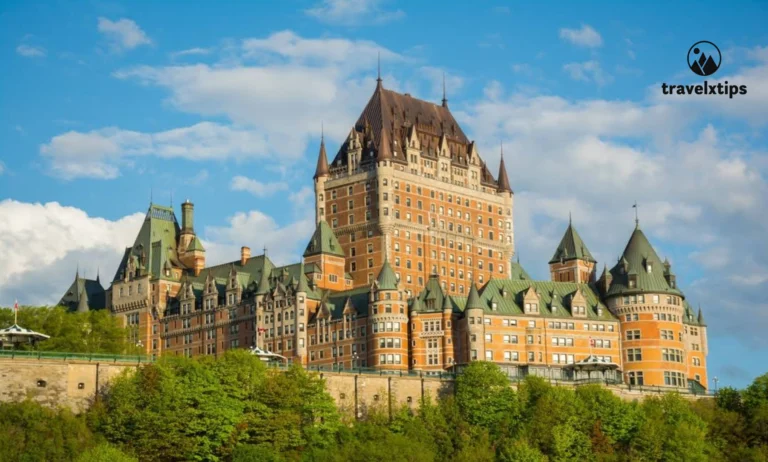Best Places to visit in Spain
Spain is a country that combines history, culture, and natural beauty, making it one of the most sought-after travel destinations in the world. Spain offers something for every traveler from the sun-soaked beaches of the Mediterranean to the dramatic peaks of the Pyrenees, and from bustling modern cities to quaint medieval towns. Whether you’re drawn to the vibrant energy of cities like Barcelona and Madrid, Granada and Seville’s architectural wonders, or its islands’ tranquil charm, this European gem is a treasure trove of unforgettable experiences. Here’s a curated list of Spain’s 20 best places to visit, each offering a unique glimpse into the country’s rich heritage and captivating landscapes.
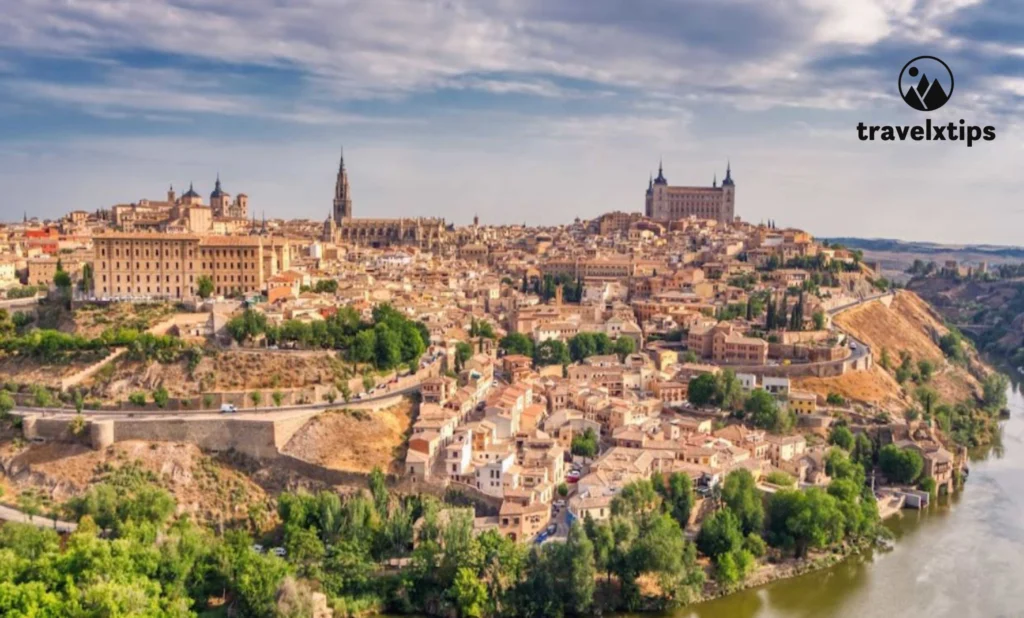
Barcelona Spain
Barcelona is the most visited city in Spain. With its unique blend of Gothic architecture, modernist landmarks, vibrant culture, and stunning Mediterranean coastline, it has something for everyone. Barcelona’s rich history and cosmopolitan energy make it a favorite destination for travelers worldwide. Top places in Barcelona include Sagrada Familia, Park Guell, Gothic Quarter, La Rambla, Casa Batlló and Casa Milà, Montjuïc Hill, Barceloneta Beach, Camp Nou, Tibidabo, El Born District.
Basílica de la Sagrada Família
The Basílica de la Sagrada Família is one of the most iconic landmarks in Barcelona, Spain, and a masterpiece of architectural ingenuity. Designed by the legendary Catalan architect Antoni Gaudí, it symbolizes modernist and Gothic art. Its style blends Neo-Gothic and Catalan Modernism (Art Nouveau). The innovative designs are inspired by nature, featuring organic shapes, vibrant colors, and intricate details. The facades depict the birth of Jesus a UNESCO-listed masterpiece with intricate carvings. The passion facades symbolize the suffering and crucifixion of Christ, featuring stark, angular sculptures.
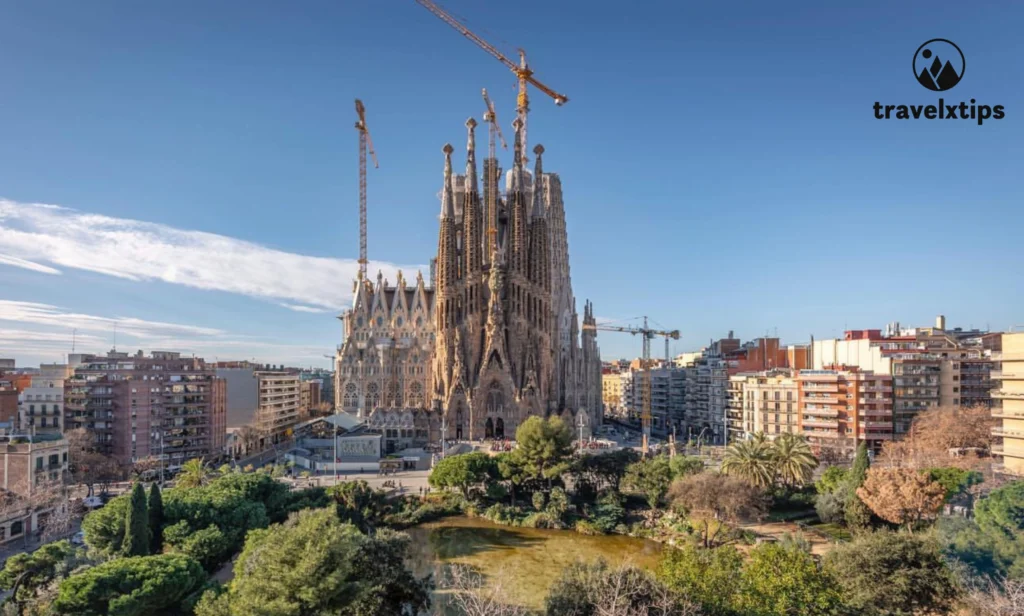
There are 18 towers (12 for apostles, 4 for evangelists, 1 for Mary, and 1 for Jesus Christ). Several have been completed, with the tallest (Tower of Jesus Christ) reaching 172.5 meters. The interior resembles a natural forest with tree-like columns branching out to support the ceiling. It is flooded with light through stunning stained glass windows, and highly detailed carvings and symbolic elements are throughout.
Casa Batllo Spain
Casa Batlló is an architectural marvel in Barcelona, Spain, designed by the renowned Catalan architect Antoni Gaudí. It is in Passeig de Gràcia, 43, 08007 Barcelona, Spain. Antoni Gaudi designed its architecture. It was originally built in 1877 and then designed by the renowned Catalan architect Antoni Gaudí.
The exterior has a Vibrant trencadís (mosaic of broken ceramic tiles) adorns the surface. Balconies resemble masks or skeletal features, often called “House of Bones.” The undulating design suggests waves or organic forms. The roofline mimics a dragon’s back, with ceramic tiles as scales.
The roof represents the dragon from the legend of Saint George, Catalonia’s patron saint. It includes a cross-topped turret, symbolizing Saint George’s lance. The interior is dominated by flowing, curved forms inspired by nature. Skylights and open spaces maximize natural light. In addition, A grand staircase, resembling the spine of a sea creature, leads visitors through the house. A blue-tiled central light well creates a calming underwater atmosphere.
Ciutadella Park
Ciutadella Park (Parc de la Ciutadella) is a historic and picturesque urban park in the heart of Barcelona, Spain. It’s a cultural and natural haven offering a mix of architectural landmarks, lush greenery, and recreational spaces. It is located near Barcelona’s old town and covers approximately 70 acres. The establishment established a military citadel on the site in 1881.
Madrid
Madrid is Spain’s capital and the second most visited city. It is full of culture, history, and lively energy. It is located in the center of Spain. Madrid’s population is approximately 3.3 million in the city proper, and over 6.5 million in the metropolitan area. Famous attractions in Madrid include.
Prado Museum
Prado Museum in Madrid is one of the world’s most renowned art museums, celebrated for its extensive collection of European art spanning the 12th to early 20th centuries. The Prado is situated on Paseo del Prado in the heart of Madrid. The area is part of the “Golden Triangle of Art” and the Reina Sofia and Thyssen-Bornemisza museums. King Ferdinand VII established the museum in 1819 with significant contributions from Queen Maria Isabel of Braganza.Spanish architect Juan de Villanueva designed its architecture in the late 18th century. It features neoclassical architecture with subsequent expansions to accommodate the growing collection. It houses over 8,000 paintings, 1,000 sculptures, and numerous prints and drawings. The masterpieces by renowned artists such as Diego Velázquez, Francisco Goya, El Greco, Titian, Rubens, Bosch, Raphael, and Rembrandt.
Royal Palace of Madrid
The Royal Palace of Madrid is one of the most visited places in Madrid. They built it in the 18th century on the site of the old Alcázar of Madrid, which fire destroyed in 1734. It is located in Calle de Bailen, Spain. It’s the official residence of the Spanish Royal Family (although they now reside at the Zarzuela Palace). It is now used for ceremonial events and state functions. It is open to the public as a museum. Italian architect Filippo Juvarra designed its architecture and his disciple, Giovanni Battista Sacchetti later completed it.
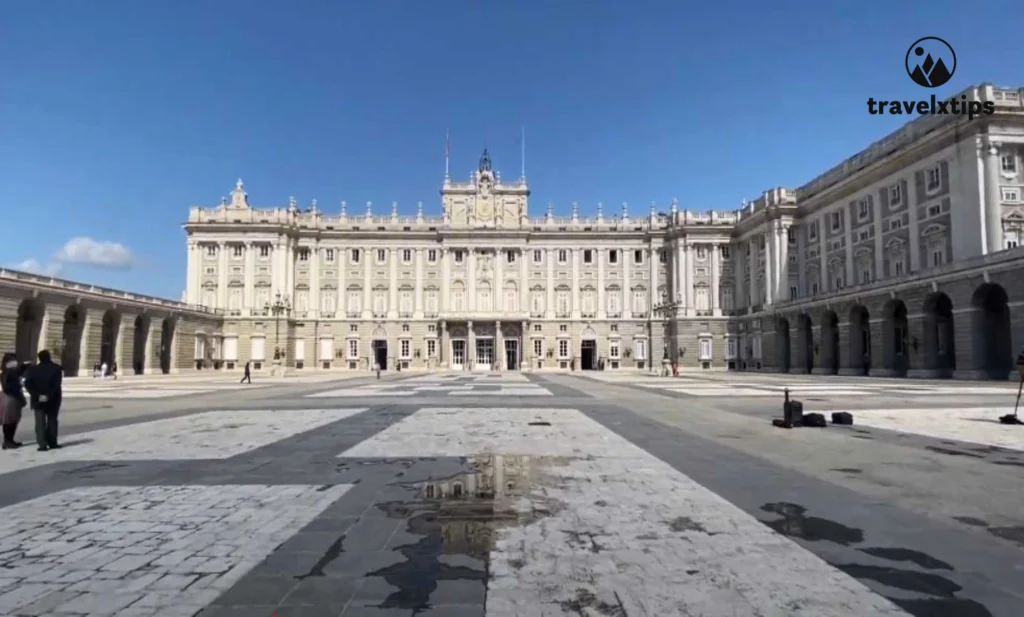
It covers over 135,000 square meters (1.45 million square feet) and contains over 3,400 rooms, which makes it one of the largest royal palaces in Europe. Its famous rooms include the Throne Room, Royal Armory, Royal Library, Royal Chapel, Grand Staircase, Almudena Cathedral, and Gardens. Its throne room is adorned with luxurious red velvet walls and stunning frescoes by Giovanni Battista Tiepolo. The Royal Armory Houses a collection of medieval and Renaissance armor and weapons considered one of the most important in the world. It features antique books, maps, and manuscripts, including some significant historical documents. The Royal Chapel is a small but opulent chapel with religious artifacts and a magnificent organ.
El Retiro Park
The El Retiro Park is one of the most iconic and beautiful parks in Madrid. It sits in the heart of Madrid near the city’s central landmarks. Its size is approximately 125 hectares (310 acres). King Philip IV created this park in the 17th century as a royal retreat. It became a public park in the late 19th century. In 2021, it was declared a UNESCO World Heritage Site as part of the “Paisaje de la Luz” (Landscape of Light). Its main attractions include Estanque Grande del Retiro which is a great pond and offers boating activities, and Palacio de Crystal which is also known as Crystal Palace. It was built in 1887.
It is an exhibition space for contemporary art under the Reina Sofía Museum. Palacio de Velázquez is another exhibition space showcasing temporary art exhibits. It is located near the Crystal Palace. The garden beautifully maintains various rose species in the Rose Garden. Similar gardens inspire it in Paris. Similar gardens inspire it in Paris. Moreover, The Fountain of Fallen Angel is a unique sculpture representing Lucifer’s expulsion from heaven. It is notable as one of the rare public monuments dedicated to the devil.
Seville
Seville is the capital of Spain’s Andalusia region. It is a city of vibrant culture stunning architecture, and rich history. It is a city where tradition meets modernity, offering visitors an immersive cultural experience. Seville has a rich history that includes periods of Roman rule, Muslim rule, and Spanish. Famous places to visit in Seville are:
Plaza de Espana
Plaza de Espana is one of the most iconic landmarks in Seville, Spain. It is famous for its grand architecture rich history and surroundings. Plaza de Espana sits in Maria Luisa Park. It is close to other tourist attractions like Seville Cathedral and the Alcazar. The canal lines the square, which is semi-elliptical in shape and surrounded by a 515-meter canal. Four bridges adorn the canal, representing Spain’s ancient kingdoms. The square has 48 tiled alcoves and benches, each representing a Spanish province.
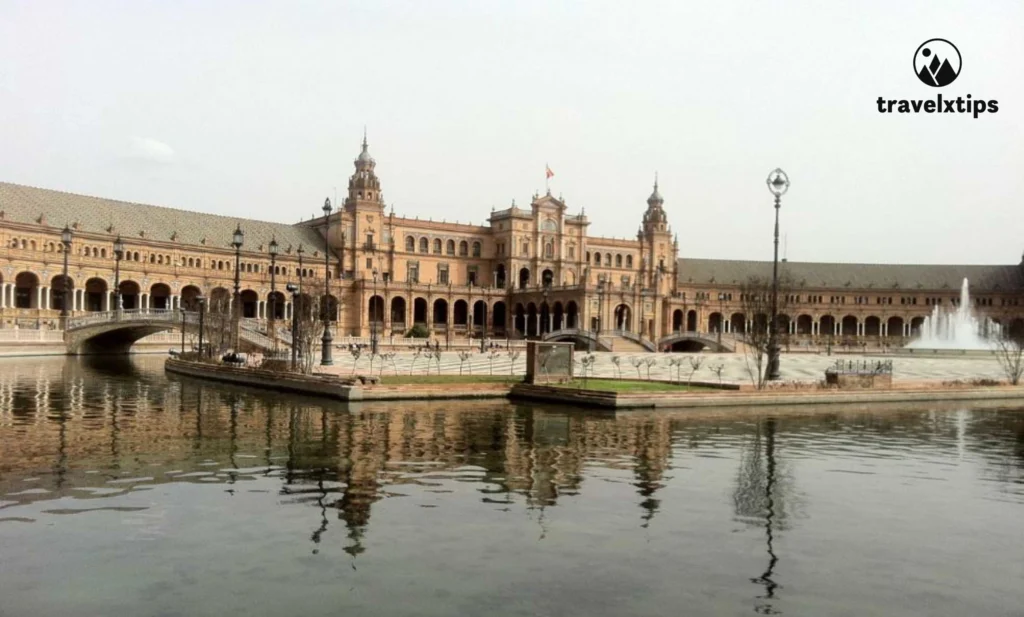
Running along the walls of the building are 48 tiled alcoves and benches representing the 48 provinces that Spain had at the time. These benches have become a real tourist attraction, with Spaniards often taking photos at the bench representing their province of origin. The alcoves are ordered alphabetically and feature the province’s name, coat of arms, map, and some historical facts. Each alcove is flanked by covered bookshelves that visitors use to donate and read books.
La Giralda
La Giralda is one of the most iconic landmarks in Seville. Its construction began in 1184. The weathervane at the top of the tower, known as the Giraldillo, gives its name, which is probably the best-known symbol of the city. The sculpture was originally called the Triumph of the Victorious Faith and was once the largest bronze sculpture of the European Renaissance. Its height is 104 meters which is approximately 341 feet. It is adjacent to the Seville Cathedral, in the heart of the city’s historic district. La Giralda is a fusion of Islamic, Gothic, and Renaissance architectural styles, reflecting its Moorish origins and later Christian modifications. It features intricate brickwork, horseshoe arches, and decorative sebka.
It was designed in the 16th century to harmonize with the Moorish structure. There are 24 bells, each with a unique name and purpose. A 4-meter bronze weather vane statue was added in 1568. It represents the triumph of faith and serves as a symbolic figure for Seville. Visitors who climb the ramps feature panoramic views and are rewarded with breathtaking views of Seville’s historic cityscape. Intricate Moorish patterns adorn the lower sections, while Renaissance details are showcased on the upper levels.
Royal Alcazar Seville
The Royal Alcázar of Seville (Real Alcázar de Sevilla) is a stunning palace complex and one of the most visited attractions in Spain. Known for its breathtaking architecture, lush gardens, and historical significance, it’s a UNESCO World Heritage Site alongside the Seville Cathedral and La Giralda. It was originally built as a Moorish Fort in 913 AD. Now it is an official residence of the Spanish royal family when visiting Seville.
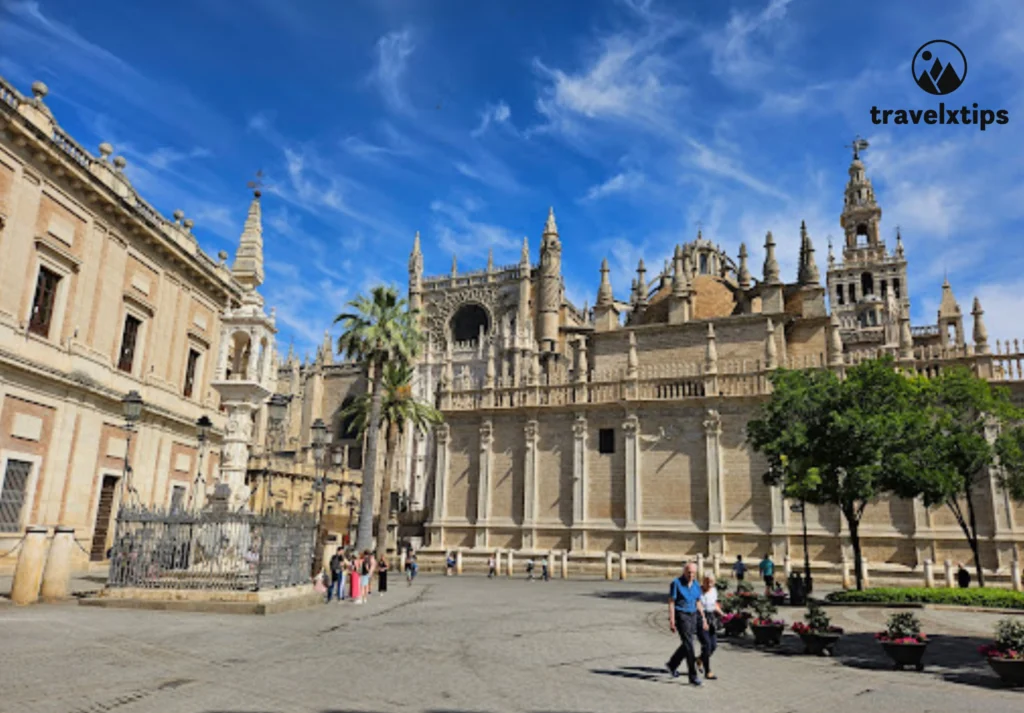
Initially constructed by the Umayyads as a fortress during their rule in Spain. Served as a hub of administration and defense for the Moorish rulers.The Palace has expansive and lush gardens which showcase fountains, pavilions, and carefully designed pathways. The Alcázar reflects the blend of cultures and religions that have shaped Spain. It has been used as a filming location for TV shows like Game of Thrones, portraying the Water Gardens of Dorne. It remains a functioning royal palace, making it one of the oldest continuously used palaces in Europe.
Isla Magica
Isla Mágica is a popular theme park located in Seville, Spain, offering a mix of thrilling rides, entertaining shows, and family-friendly attractions. It’s a top choice for both locals and tourists seeking fun and adventure. It reflects 16th-century Seville with scenic canals, markets, and traditional architecture. It contains different areas like:
Sevilla, Puerto de Indias
It reflects the 16th century Seville, with scenic canals, markets, and traditional architecture. Its top attractions include.
Anaconda
A thrilling water coaster with exciting drops and turns. It is suitable for those who love a mix of speed and slash.
Carabelas
A museum in Palos de la Frontera, Spain, that features replicas of Christopher Columbus’s ships for his first voyage to the Americas. The museum also has bilingual displays about Columbus’s voyages, instruments of navigation, and an indigenous experience. The three ships on display are the Niña, the Pinta, and the Santa María.
Cinemocion
Cinemoción is one of the standout attractions in Isla Mágica’s Sevilla, Puerto de Indias zone. This immersive 4D cinema offers a thrilling experience where visitors feel like they’re part of the action on screen. Using advanced audiovisual and sensory effects, Cinemoción captivates audiences with dynamic storytelling and exhilarating visuals.
It combines 3D visuals with physical effects like vibrations, wind, and water sprays to immerse visitors in the movie. The moving platform seats enhance the feeling of flying, falling, or racing, creating a multisensory adventure. The films often follow adventure, exploration, or fantasy themes that align with Isla Mágica’s broader narrative of discovery.
Each screening lasts about 10–15 minutes, making it a quick yet memorable part of the park experience. It is perfect for taking a break from outdoor activities while staying entertained. It’s suitable for most age groups, though very young children or those sensitive to motion may find it intense. A family-friendly attraction that balances excitement with accessibility. It features State-of-the-art projection systems and synchronized motion seating to deliver a high-quality viewing experience. Special effects like mist, bubbles, and scent add another layer of realism.

